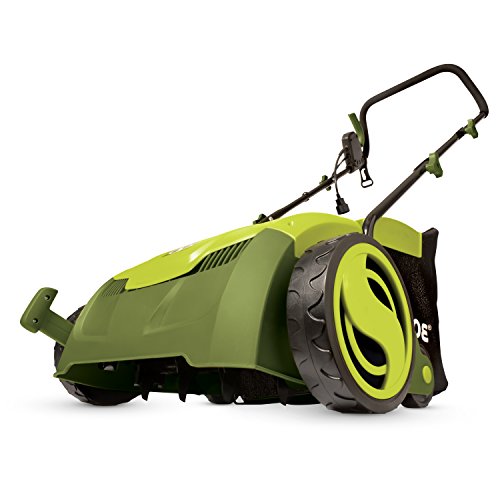Thatch is a layer of living and dead roots, crowns and lower shoots that often develops in lawns. It can weaken and even destroy a lawn if not prevented or removed.
Excessive growth as well as conditions unfavorable to the microorganisms responsible for the decomposition of decaying plant parts aid in thatch development. Rapid and excessive growth is likely to produce heavy thatch because plant material is being produced more rapidly than it can be decomposed.
Thatch buildup varies from lawn to lawn. Some lawns never develop a thatch layer, while others become thatch-bound within a few years of being established.
The best lawn grasses are those that constantly reproduce new plants in order to renew the lawn. As old plants age and die, they decompose into fine, textured humus that becomes a part of the surface soil.
Once thatch starts to form, conditions develop that may favor even more thatch.
Grass clippings from mowing do not contribute to thatch. However, once a thatch layer has developed, clippings further speed its formation.
Accumulated thatch harbors disease-causing fungi and insects. It also prolongs high humidity, which favors disease, causes shallow root development and slows movement of air, water and nutrients into the soil. These factors contribute to the early death of grass plants.
Thatch development may go unnoticed in early stages. Lawns with a thick thatch layer may appear healthy in the spring and then suddenly die in large patches during summer heat and drought. As thatch builds up, the roots of new grass plants grow within the thatch layer rather than in the soil. When the lawn is exposed to hot, dry summer weather, the plants are unable to survive.
Good cultural practices, begun when the lawn is new, are usually effective at preventing or retarding thatch.
Fertilize moderately and regularly to maintain lawn vigor without excessive growth.
Cut grass regularly at the recommended height to maintain vigor and to avoid shock. No more than one-third of the leaf tissue should be removed with each mowing.
Remove excessive clippings, especially during periods of rapid growth.
Collect and remove clippings once a thatch layer begins developing to avoid further buildup.
Irrigate every seven days, or as needed in dry periods, to encourage deep rooting.
Power rake as needed to keep thatch below a half-inch thick. For fescue, early fall is preferred; for summer grasses, like zoysiagrass and bermudagrass, rake mid-summer.
Aerate the soil to lessen soil compaction and improve penetration of water, oxygen and fertilizer. (Aeration is the process of mechanically poking thousands of holes in the soil.) Power aerators that remove soil cores 2- to 3-inches deep are very effective and can be rented from hardware or tool rental stores. Leave soil cores on the surface to dry and crumble before mowing. Mow the dried soil cores to redistribute the soil microbes that decompose soil and thatch and aid in reducing thatch.
Top-dress every one or two years with one-fourth of an inch of weed-free manure or soil. Use a material that is similar in texture to the existing soil in order to encourage decay of thatch.
Avoid nonselective use of pesticides that hurt earthworms. Earthworms naturally reduce thatch as they collect it from the surface and mix it deeper into the soil.

